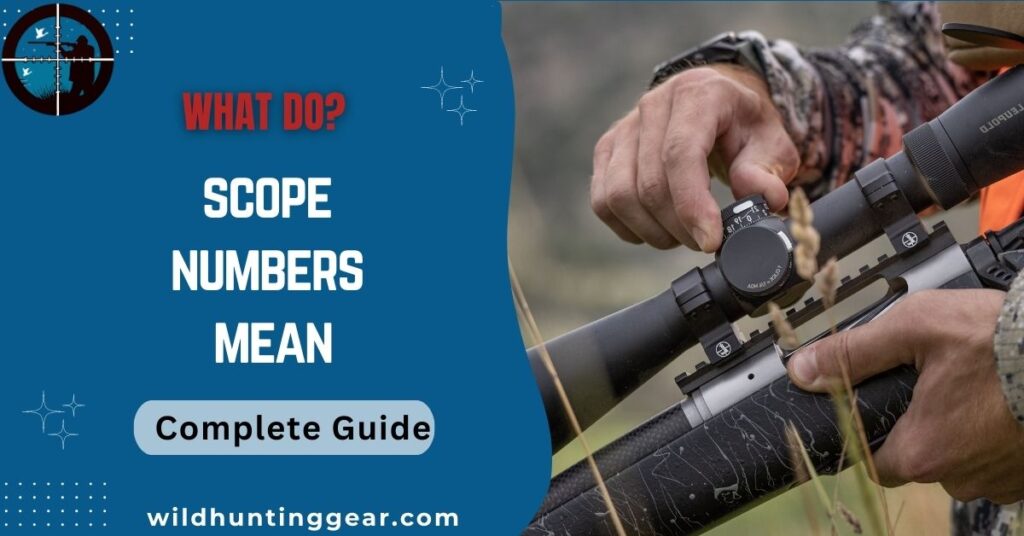Scope numbers, often found on the side of rifle scopes or similar optics, may seem confusing at first glance. However, understanding these numbers is crucial for making an informed decision when purchasing the right scope for your needs, be it for hunting, sport shooting, or tactical purposes.
This guide will walk you through the meaning of scope numbers, their significance in product development and their application in different industries.
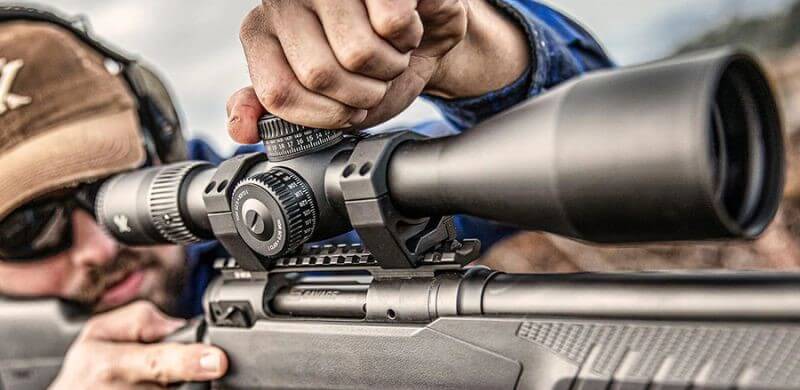
Scope Numbers Explained

A. Magnification (e.g., 3-9×40)
- Definition of Magnification: Magnification is the ability of the scope to enlarge the appearance of an object. In the example 3-9×40, the numbers 3-9 represent that the scope can magnify the target from 3 to 9 times the size as seen by the naked eye.
- Interpreting Magnification Numbers: A flexible range of magnifications, such as 3-9x, is useful for different shooting scenarios, allowing the shooter to zoom in or out as needed.
- Real-World Applications of Different Magnifications: Lower magnifications provide a wider field of view, which is useful for close-range shooting or fast-moving targets, while higher magnifications are more suitable for long-range shooting and stationary targets.
B. Objective Lens Diameter (e.g., 3-9×40)
- Purpose of Objective Lens Diameter: The objective lens collects and directs light into the scope to form an image. In the example 3-9×40, the number 40 refers to the diameter of the objective lens in millimeters.
- How Objective Lens Size Affects Light Transmission: Larger objective lenses allow more light to enter the scope, providing a brighter and clearer image in low-light conditions.
- Striking a Balance Between Size and Performance: However, larger lenses can also add weight and bulk to the scope. It’s important to consider the trade-off between size and performance in relation to the intended application.
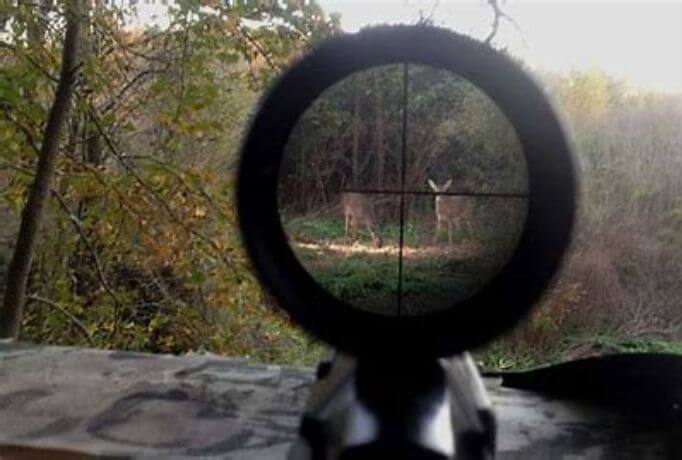
C. Exit Pupil (e.g., 3-9×40)
- Understanding Exit Pupil Size: The exit pupil is the diameter of the beam of light that exits the eyepiece and enters the shooter’s eye. A larger exit pupil provides a brighter image, which is especially important in low-light conditions.
- Implications for Low-Light Shooting: When choosing a scope, consider the exit pupil size in relation to the anticipated lighting conditions. Generally, a larger exit pupil is preferred for low-light shooting.
D. Field of View (FOV) (e.g., 3-9×40)
- Defining Field of View: Field of view refers to the area visible through the scope at a specific magnification level, usually expressed in feet at 100 yards or meters at 100 meters.
- Significance in Target Acquisition and Tracking: A wider field of view allows the shooter to locate and track targets more easily, which is valuable for close-range shooting and fast-moving targets.
E. Eye Relief (e.g., 3-9×40)
- Meaning of Eye Relief: Eye relief is the distance between the shooter’s eye and the eyepiece when a full field of view is visible. Adequate eye relief is essential for comfortable shooting and avoiding injury due to recoil.
- Importance for Recoiling Firearms: For firearms with significant recoil, long-range eye relief is preferred to prevent the shooter from being kicked in the face by the scope.
F. Parallax Adjustment (e.g., 3-9×40)
- Definition of Parallax: Parallax is an optical illusion that occurs when the reticle appears to move against the target when viewed at different angles.
- Applications of Parallax Adjustment: Most scopes offer parallax adjustment, which allows the shooter to fine-tune the scope for long-range accuracy by adjusting the amount of parallax present.
- Benefits of Parallax Adjustment: With this feature, the shooter can make more consistent and precise shots at long distances, even when the target is moving.
Common Scope Number Misconceptions
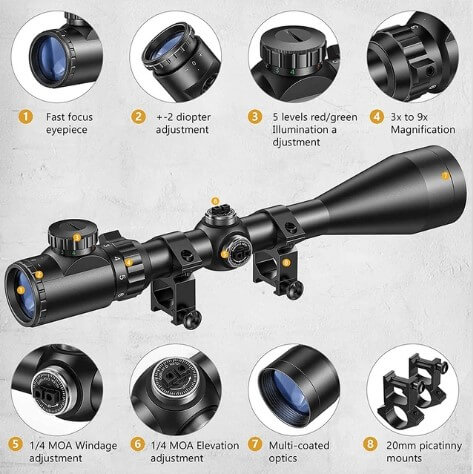
Following are some of the 6 common misconceptions about scope numbers that one should keep in mind when selecting their scope:
● Higher magnification: Higher magnification always results in better shooting performance. While higher magnification allows the shooter to see the target more clearly, it can reduce the field of view, making it harder to track moving targets and destabilize the view due to minor hand movements.
● Larger objective lenses: Larger objective lenses always provide clearer images. Although a larger lens can gather more light, the quality of the image also depends on the quality of the glass and coatings on the lens.
● A larger exit pupil: A larger exit pupil always results in a brighter image. While this is generally true, human eyes can only use about 2-7mm of light. Thus, an exit pupil larger than 7mm might not provide any additional benefit, especially during daylight.
● Field View: The field of view is directly related to the lens size. In reality, the field of view is determined primarily by the scope’s design and magnification.
● Extended Eye Relief: More extended eye relief is always better. While longer eye relief can prevent injury from recoil, it can also decrease the field of view and make the scope harder to use.
● Parallax error: Parallax errors don’t significantly impact shooting performance. However, at longer ranges or with higher magnification scopes, parallax errors can lead to significant inaccuracies.
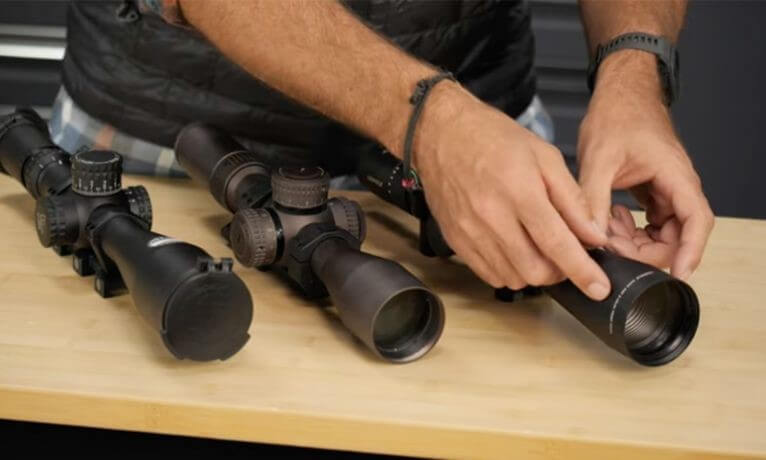
Practical Tips for Scope Use
Practical Tips for Scope Use:
- Check the eye relief: Eye relief is an important factor to consider when selecting a scope for a firearm with significant recoil. Ensure that it allows you to keep your head in a natural, comfortable position while aiming down the sights.
- Test before buying: Before investing in any scope, test it out on the intended firearm and in different shooting scenarios. This will help you get a better feel for how the scope operates and whether it is suitable for your needs.
- Keep it clean: Regularly inspect and clean your scope to ensure optimal performance. Cleaning kits are available, or you can use a cotton swab with rubbing alcohol.
- Practice regularly: Just like any other skill, shooting with a scope requires practice and repetition. Regularly practice using your scope to hone your skills and increase accuracy.
- Use the right ammo: Different types of ammunition can produce different results in terms of accuracy, velocity and recoil. Talk to an expert or do some research online to determine which type is best for your intended purpose.
- Have backup batteries: Most scopes require batteries for reticle illumination. Make sure to always keep a set of fresh, backup batteries handy in case your scope runs out.
- Adjust the parallax: Parallax can create accuracy issues at longer ranges, so make sure to adjust the parallax setting according to the distance and target size before taking aim.
- Zero in your scope: Before going out to the range to shoot, spend some time zeroing in your scope at different distances. This will help ensure that you are on-target with every shot and reduce the need for frequent adjustments later on.
- Use a good mount: Selecting a high-quality mount is important for keeping your scope steady and accurately aligned with your firearm. Make sure to choose a mount that is compatible with your scope’s size, weight and base.
- Invest in quality: When it comes to scopes, you typically get what you pay for. Higher-priced models tend to offer better clarity, accuracy and durability than cheaper options. Consider investing in a higher-quality scope if your budget allows.
These tips can help you make the most of your scope and get the most accurate results when shooting. Keep in mind that practice, patience and proper maintenance are key to mastering this skill. With dedicated practice, you’ll soon be able to shoot with confidence and precision!
Summing Up:
Scope numbers are incredibly important when choosing the right lens for a scope. While many factors can play a role in selecting a scope, understanding what a scope number is and how it affects your purchasing decision is an essential part of becoming knowledgeable and informed about all things optics related.
By understanding this essential piece of information, you can effectively decide on an appropriate model that meets your needs.
Ultimately, knowing what to look for when shopping for a rifle scope will help ensure you purchase something that satisfies your shooting requirements both now and into the future.
